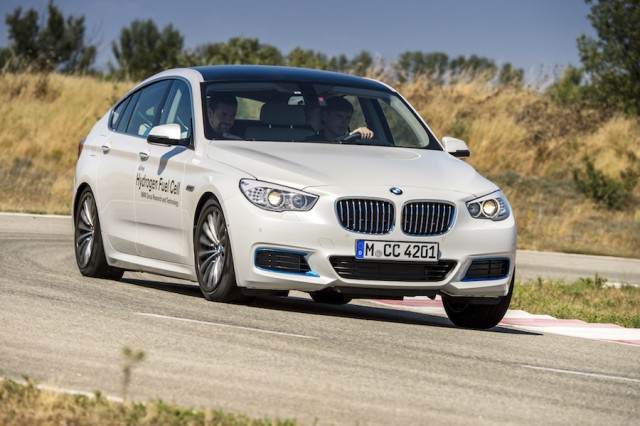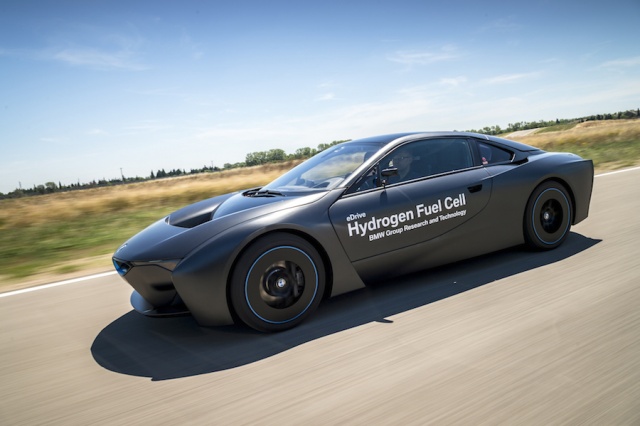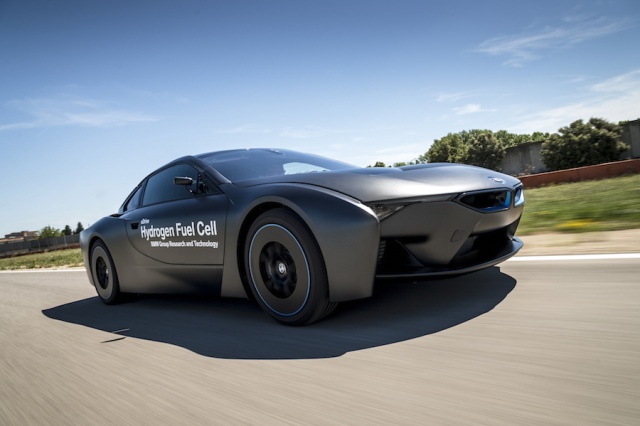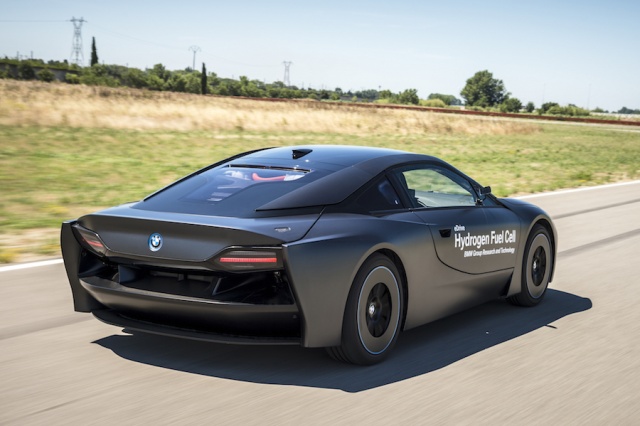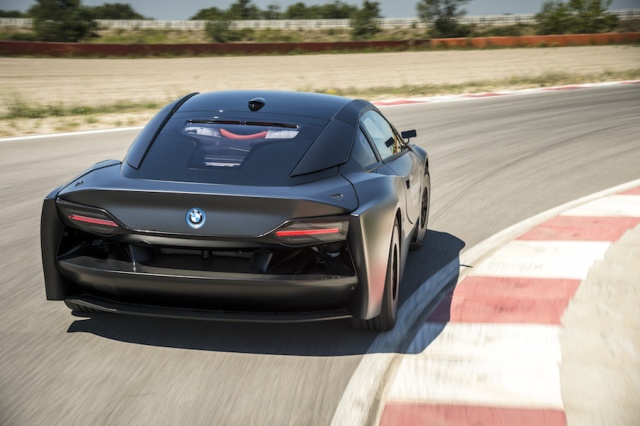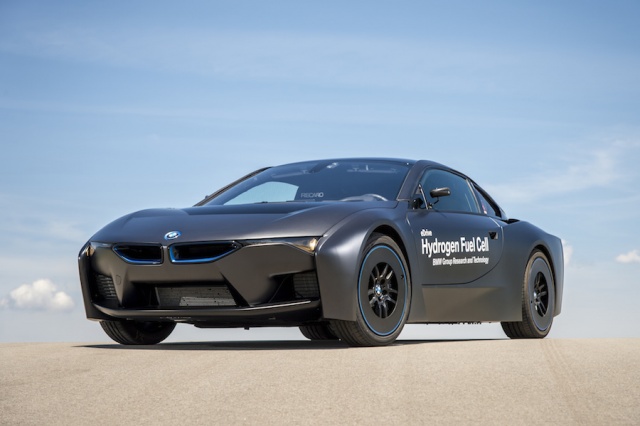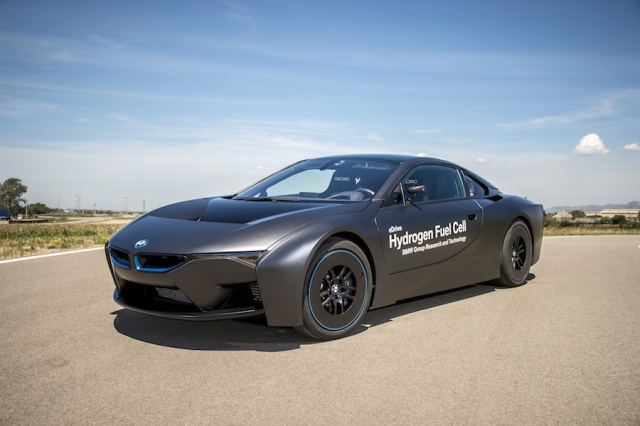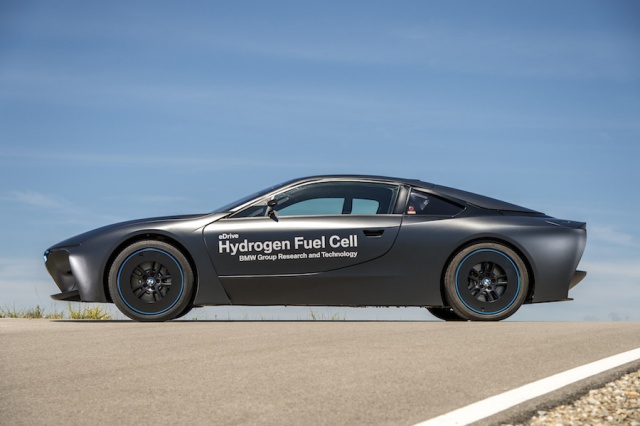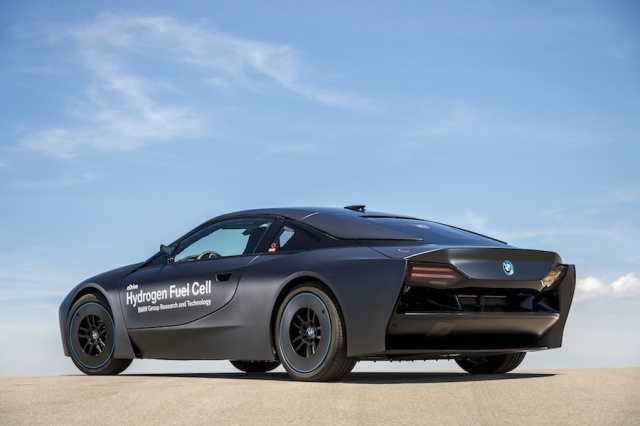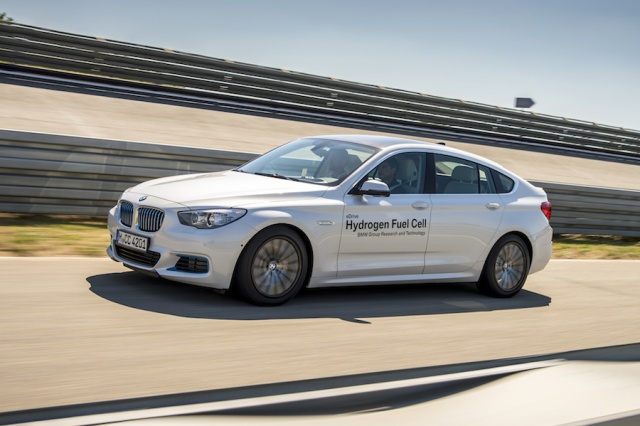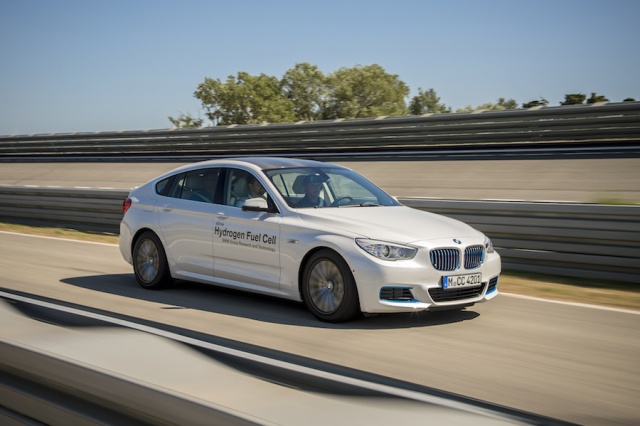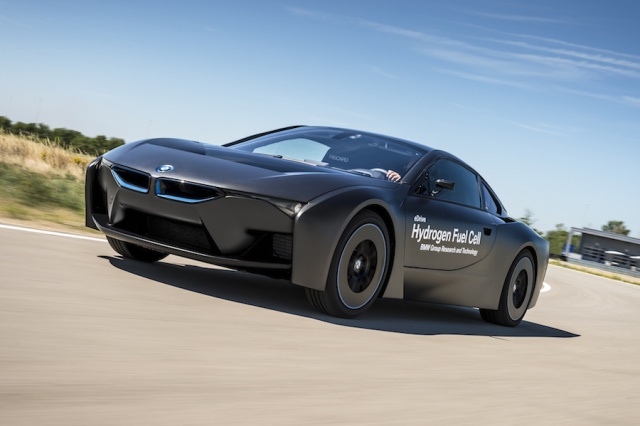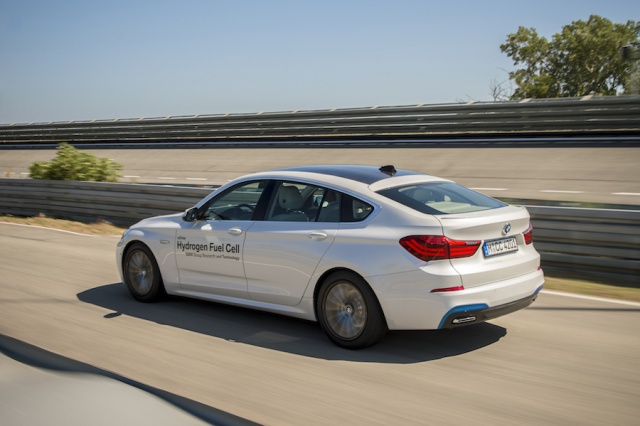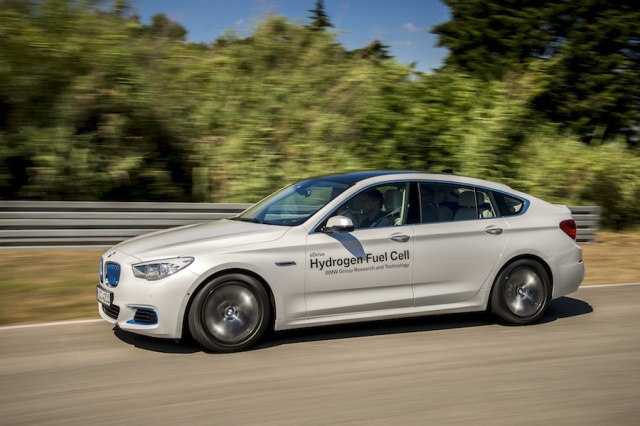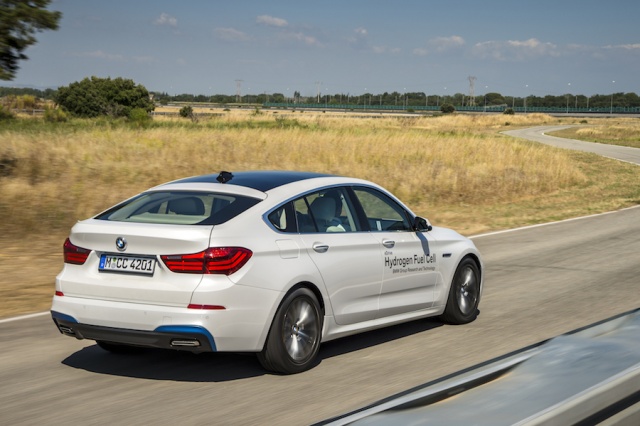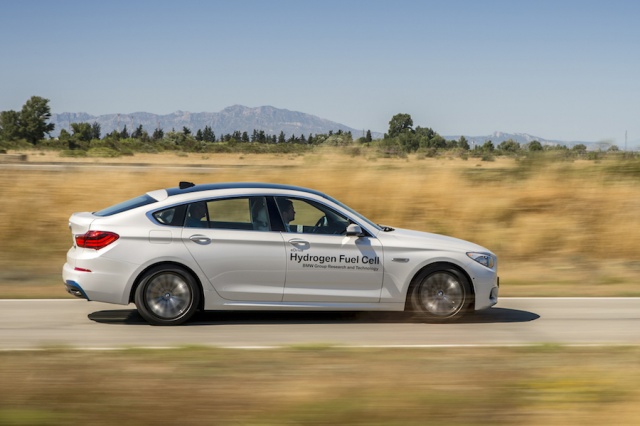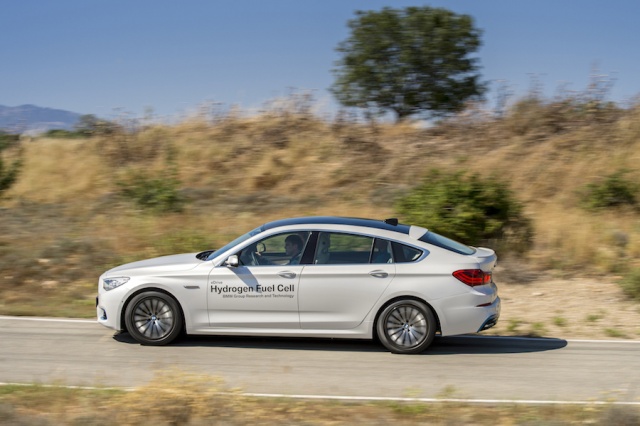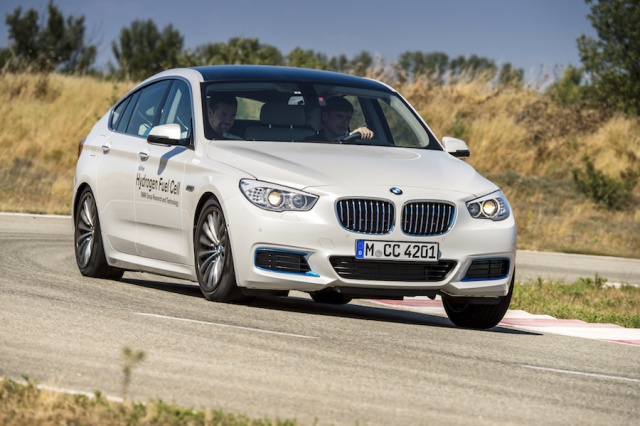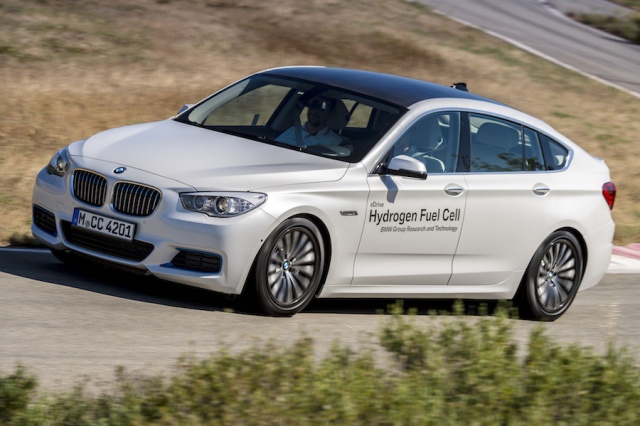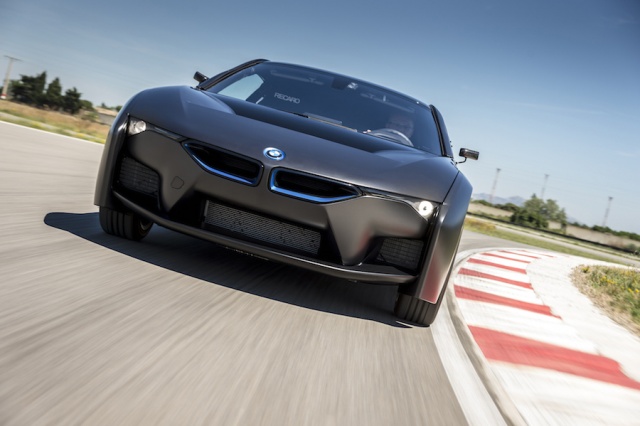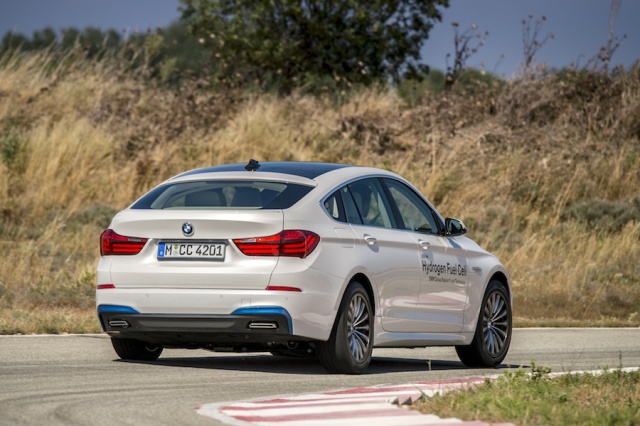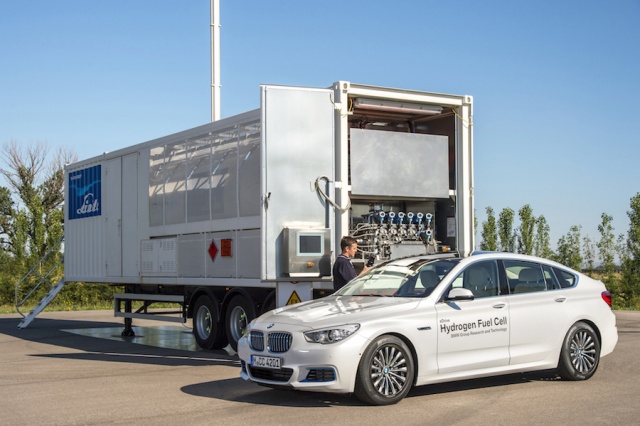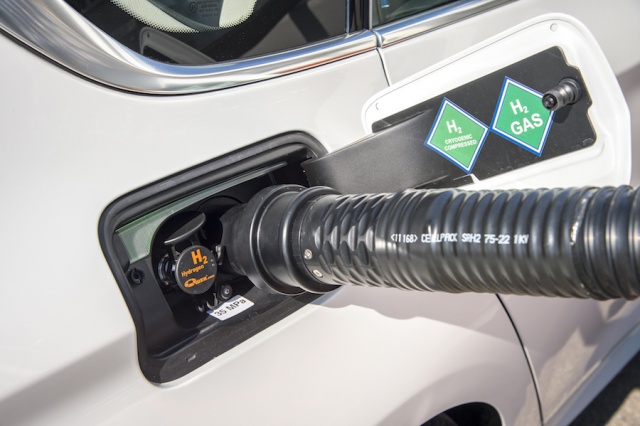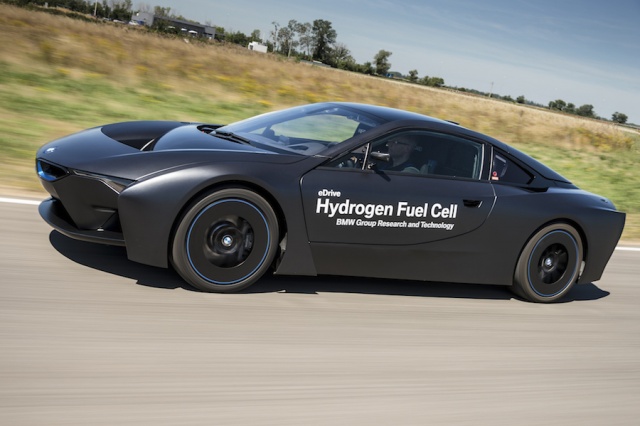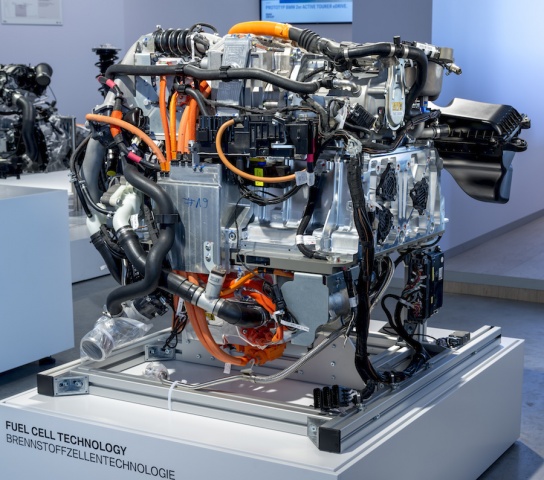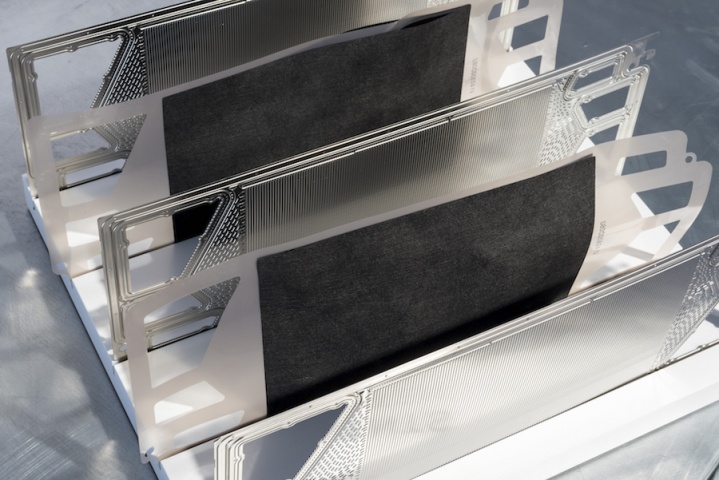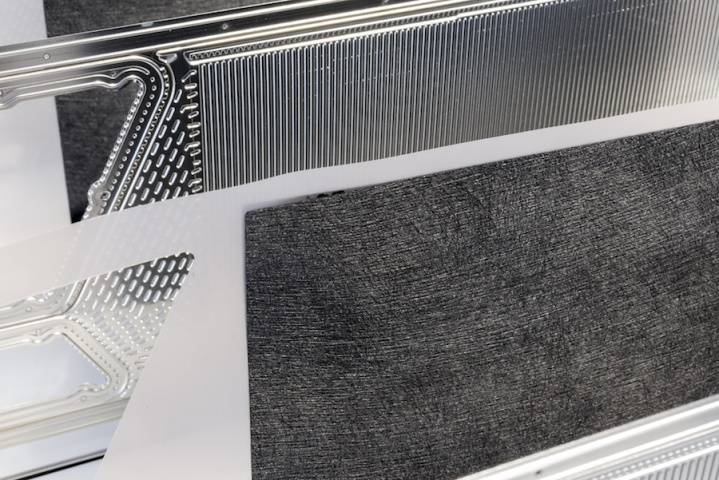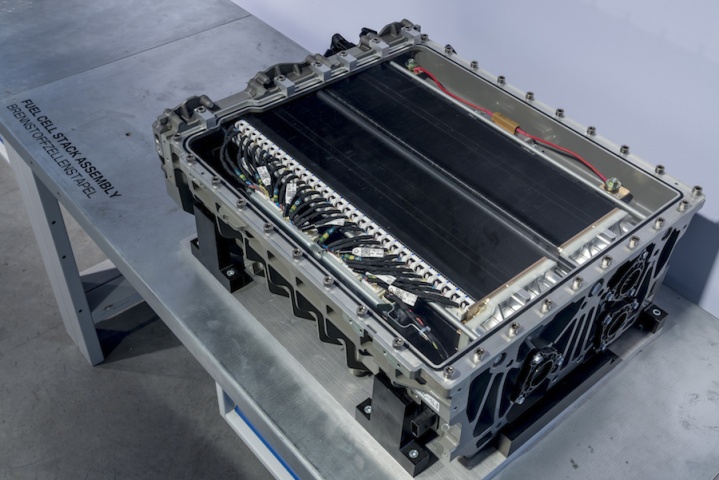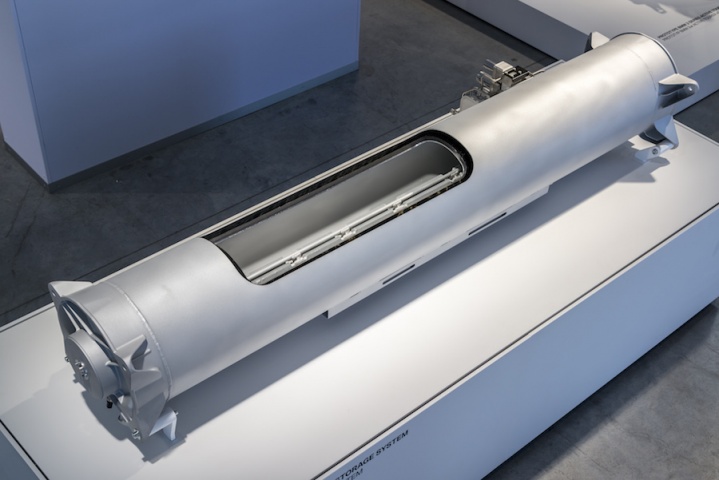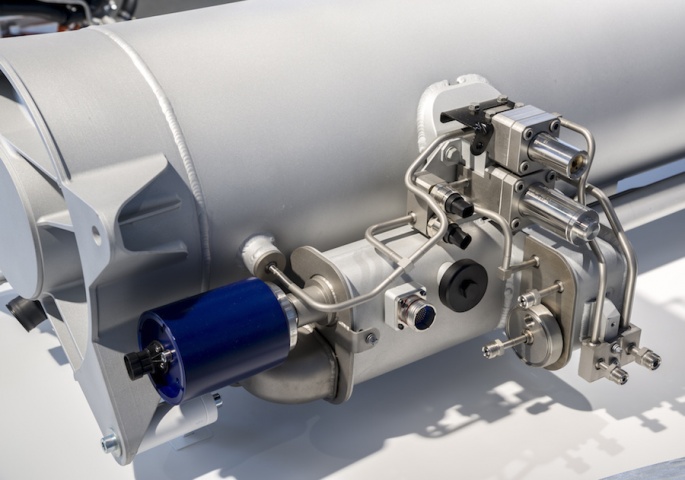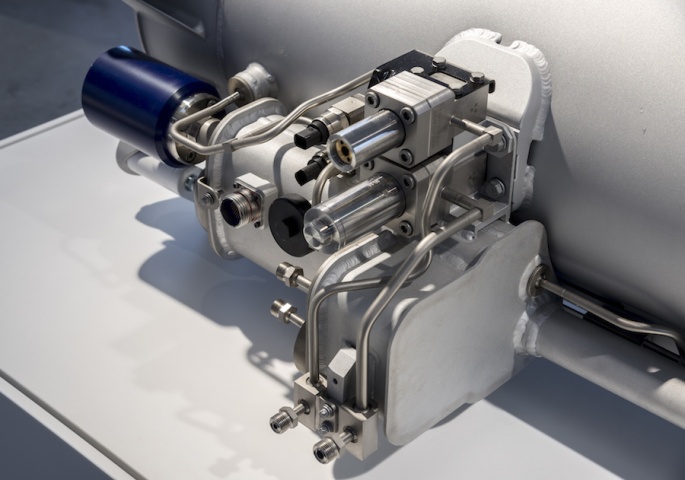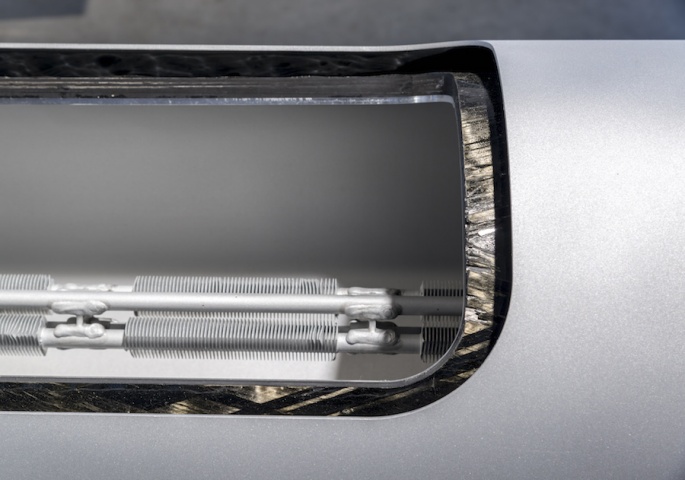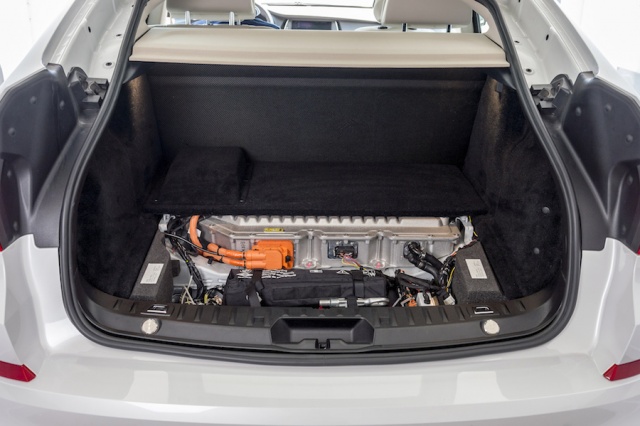Petrol or diesel hybrid vehicles are somewhat self-defeating, as - for all their low-emissions, electrically augmented goodness - you still have to rely on dirty fossil fuels to get around the place. But, what if you could power an electric motor with another zero-emissions system? BMW, working in conjunction with Toyota, believes the best way of doing that is to use a hydrogen fuel cell and is already working on the idea for the 2020s. We've driven the technology at a very early development stage and the signs are promising.
In the metal 3/5
For our drive of the fuel cell electric vehicle (FCEV), the system was installed in a 5 Series GT, which to all intents and purposes looked like a standard car, save for some fuel cell stickers. BMW has made a very cool-looking FCEV development mule vehicle, that's some sort of cross between a BMW i8 and the Batmobile, but there's no indication that this monster would ever come to production, either in the main range or as a new i-car. So for the FCEV, the 5 GT it is, which is by no means our favourite BMW aesthetically. Still, the large, cylindrical hydrogen fuel tank sits longitudinally in the chassis of the 5 GT where the propshaft would ordinarily lie, with the fuel cell in the engine bay. The electric motor and its two-stage reduction gear transmission are at the back, driving the rear axle. Bearing in mind that this is an extremely rough 'n' ready R&D car, being a long, long way from a sales reality, taking cues from the interior is probably a bad idea but for what it's worth, a hydrogen fuel gauge sat at the bottom of the instrument cluster while the only indication of the fuel tank's presence was a bolted-on, carpeted arc sitting on the transmission tunnel in the rear. It was just as spacious and conventional inside as a normal 5 Series GT.
Driving it 4/5
Again, we have to stress that BMW is far from finished here but already the signs are impressive. The hydrogen fuel cell never drives the wheels, instead simply burning its fuel to act as a generator for the electric motor - in that way, it's very similar to the principle seen in the i3 Range Extender, with the two-cylinder motorbike engine replaced by the fuel cell.
The hydrogen fuel can be stored in two ways. In its regular form, 4.5kg of the stuff is in the tank, supplied to the engine at 700bar, giving a theoretical range of 450km, or alternatively cryo-compressed hydrogen allows for 7.1kg, supplied at 350bar, upping the FCEV's capability to 700km. Driving to elicit either of these figures is conducted entirely in zero-emissions, electric-motor silence - unlike modern plug-in hybrid vehicles, which have zero-emissions running numbers in the order of 50km.
Brilliantly, even with current technology it takes less than five minutes to fill the hydrogen tank in a manner that's very similar to pumping either petrol or diesel into your daily driver, but BMW is confident that in just a few years' time, these FCEVs will be as quick and easy to fill up as regular cars. The big factor in the success of the FCEV will be infrastructure support - between 2020 and 2030, key regions/markets for the BMW FCEV are going to drastically increase the number of hydrogen filling stations they currently have. Included are California, Germany, South Korea and Japan. No plans in Ireland as yet that we are aware of.
In terms of the drive, the extra 100kg of weight that the fuel cell brings to the 5 GT isn't too noticeable in terms of ride and handling, which both seem tidy enough. The acceleration is brisk, given the electric motor is in a high, 245hp state of tune, although there is a noticeable clunk as the FCEV switches to its longer reduction gear at around 90km/h. There's also an audible whooshing noise from underneath, which we're told is a compressor forcing air into the fuel cell, but both the transmission's smoothness and acoustic damping work are not finalised at this stage. It otherwise drives in the fuss-free, pleasing manner of any battery-electric vehicle (BEV), with lots of low-speed torque and super-smooth power delivery. It could be the perfect solution to BEV range anxiety.
Summary
Marrying hydrogen fuel cell technology to electric motors and lithium-ion batteries is not the work of a moment, so BMW is predicting that a "technologically mature, customer-ready car" will not be a reality until beyond 2020. A proper network of hydrogen filling stations will also be required, but the future of fully electric vehicles looks bright, if this 5 Series GT is anything to go by. We await further developments on this project by BMW with huge interest.

